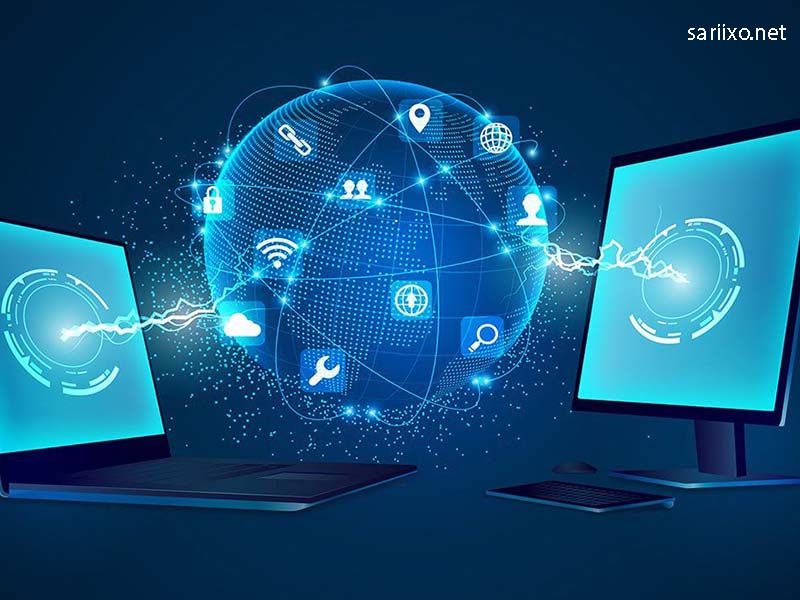In today’s fast-paced digital world, the term Information Technology (IT) has become ubiquitous. But what exactly does it entail? This article aims to demystify the concept of Information Technology, exploring its components, significance, and future trends.
Understanding Information Technology
Information Technology is a broad field that encompasses the use of computers, software, networks, and databases to manage, store, and disseminate information. At its core, IT integrates hardware, software, and services to facilitate the efficient handling of information.
Key Components of Information Technology
Hardware
This includes all physical devices, such as computers, servers, routers, and other networking equipment. The efficiency of an IT system largely depends on the quality and capability of its hardware.
Software
Software refers to the applications and programs that run on hardware. This includes operating systems (like Windows or Linux), productivity software (such as Microsoft Office), and specialized applications for various industries.
Networking
Networking involves connecting computers and devices to share resources and information. This can include local area networks (LAN), wide area networks (WAN), and the internet itself.
Data Management
Data is the cornerstone of IT. This involves collecting, storing, and analyzing data to derive insights and support decision-making processes. Database management systems (DBMS) like SQL Server or Oracle are essential for effective data management.
IT Services
This encompasses the support and maintenance of IT systems, including troubleshooting, cybersecurity, and technical support. IT services ensure that systems run smoothly and securely.
The Importance of Information Technology
Information Technology plays a crucial role in various aspects of modern life and business. Here are some reasons why IT is indispensable:
Enhanced Communication
IT has transformed the way we communicate. With tools such as email, instant messaging, and video conferencing, information can be shared instantaneously across the globe. This has led to more effective collaboration among teams, regardless of their physical location.
Increased Efficiency
By automating processes, IT enables organizations to operate more efficiently. Tasks that once required significant manpower can now be completed in a fraction of the time using software applications. This not only saves time but also reduces human error.
Data Management and Analysis
Organizations generate massive amounts of data every day. IT provides the tools necessary to collect, store, and analyze this data, helping businesses make informed decisions based on real-time information. Data analytics has become a vital component in strategic planning and marketing.
Cybersecurity
As digital threats continue to evolve, cybersecurity has become a top priority for organizations. Information Technology encompasses various measures and protocols to protect sensitive data from breaches and cyberattacks. IT professionals work tirelessly to safeguard networks and systems, ensuring that information remains secure.
Innovation and Competitive Advantage
The rapid advancements in technology have opened new avenues for innovation. Companies that leverage IT effectively can gain a competitive edge in their respective markets. From developing new products to improving customer service, the possibilities are endless.
The Evolution of Information Technology
The evolution of Information Technology can be divided into several key phases
The Mainframe Era
In the mid-20th century, large mainframe computers dominated the IT landscape. These machines were expensive and primarily used by government and large corporations for processing massive amounts of data.
The Personal Computer Revolution
The 1970s and 1980s saw the advent of personal computers (PCs). This democratization of technology allowed individuals and small businesses to harness computing power, leading to a significant increase in productivity and innovation.
The Rise of the Internet
The 1990s marked the emergence of the internet, revolutionizing the way information is shared and accessed. The internet has since become a critical infrastructure for businesses and individuals alike, enabling global connectivity and communication.
The Mobile Era
With the proliferation of smartphones and tablets in the 2000s, access to information became more mobile than ever. Mobile applications have transformed how people interact with technology, creating new business models and opportunities.
Cloud Computing and AI
Today, cloud computing and artificial intelligence (AI) are at the forefront of IT advancements. Cloud services allow organizations to store and process data remotely, offering scalability and flexibility. AI technologies are enhancing data analysis, customer service, and even decision-making processes.
Future Trends in Information Technology
As we look ahead, several trends are poised to shape the future of Information Technology
Artificial Intelligence and Machine Learning
AI and machine learning are expected to continue their rapid development, enabling more sophisticated data analysis and automation. This will revolutionize industries such as healthcare, finance, and logistics.
Cybersecurity Innovations
As cyber threats become increasingly complex, the demand for advanced cybersecurity solutions will grow. Emerging technologies, such as blockchain, may play a crucial role in enhancing data security and privacy.
The Internet of Things (IoT)
The IoT refers to the network of interconnected devices that communicate and share data. This trend is expected to expand, impacting sectors such as smart homes, healthcare, and manufacturing, leading to improved efficiency and convenience.
Quantum Computing
Although still in its infancy, quantum computing holds the potential to solve complex problems much faster than traditional computers. This could revolutionize fields such as cryptography, materials science, and pharmaceuticals.
Remote Work Technologies
The COVID-19 pandemic accelerated the adoption of remote work technologies. Tools that facilitate remote collaboration and productivity are likely to remain essential, as companies adapt to more flexible work environments.
Conclusion
Information Technology is a dynamic and integral part of modern society, driving innovation, efficiency, and connectivity. Understanding its components and significance is essential for navigating the digital landscape. As technology continues to evolve, staying informed about IT trends will be crucial for individuals and organizations aiming to thrive in an increasingly digital world.
In summary, Information Technology encompasses a vast array of tools, processes, and practices that facilitate the effective management of information. From enhancing communication to ensuring cybersecurity, IT is a cornerstone of success in today’s interconnected environment. Embracing the future of IT will pave the way for new opportunities and advancements that can transform how we live and work.



